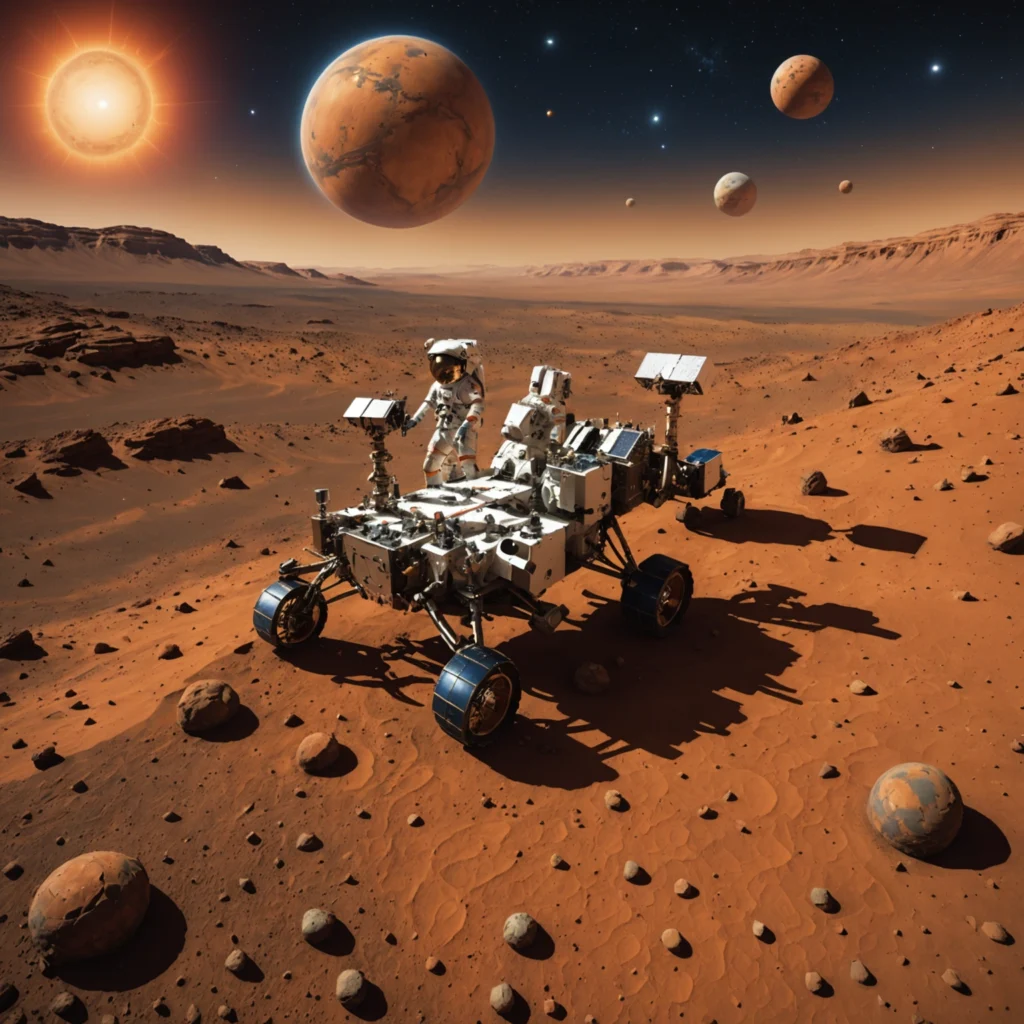
Introduction: A New Era in Space Exploration
In recent years, scientists and engineers have ramped up efforts to explore the cosmos. Moreover, they utilize Mars’ gravitational field as a natural boost for spacecraft. Consequently, missions benefit from enhanced speed and extended travel distances. In addition, researchers design these flybys meticulously, ensuring every maneuver contributes to the success of interplanetary journeys. This innovative approach not only deepens our understanding of space but also inspires future endeavors.
Mars as a Gravitational Slingshot
Space agencies around the world plan flybys that take full advantage of Mars’ momentum. Furthermore, the applied technique harnesses the red planet’s movement around the Sun. In detail, engineers plan encounters where spacecraft approach Mars in an optimal direction. As a result, the craft gains extra velocity when leaving the planet’s gravitational well. Additionally, the careful calculation of trajectories minimizes potential hazards. Hence, each mission transforms a risky maneuver into a scientifically rewarding experience.
Key Missions and Their Experiences
NASA’s Europa Clipper, ESA’s Hera, and NASA’s Psyche mission illustrate the wide array of scientific objectives completed during Mars encounters. These missions often incorporate the following steps:
- Approach Mars with precision, ensuring safety and optimal trajectory.
- Collect valuable data using onboard instruments during the flyby.
- Execute a gravity assist maneuver to boost velocity for subsequent targets.
Moreover, each step showcases a blend of art and science that propels the mission forward while maintaining rigorous safety standards.
The Science Behind the Craft
Engineers and scientists compile intricate calculations to harness Mars’ gravity. They use technology that combines onboard sensors, simulation software, and decades of accumulated space knowledge. In addition, teams scrutinize gravitational fields to determine how they affect trajectories. For instance, a slight variation in the approach angle can lead to a disproportionate increase in speed. By comparing simulated data with actual mission outcomes, researchers refine their predictions. In contrast, even small errors risk significant deviations. Therefore, continuous improvements and iterative testing become indispensable.
Technological Innovations Enabling Success
Space missions showcase advancements that capture our imaginations. Notably, the Mars 2020 Perseverance rover applies cutting-edge imaging and sensor technologies. Additionally, instruments such as Mastcam-Z provide high-resolution panoramas that scientists analyze carefully. Furthermore, innovations in autonomous navigation help the rover select scientifically interesting outcrops like “Sally’s Cove.” The onboard systems respond swiftly to unexpected terrain features, and advanced algorithms process the environmental data rapidly. This integration of technology illustrates how modern robotics and space science collaborate effectively.
Observations and Data Collection
In parallel with gravitational maneuvers, spacecraft collect crucial data during close passes. For example, during Clipper’s Mars flyby, engineers coordinate imaging sequences and calibrate instruments accurately. Consequently, these operations reveal dynamics within Mars’ atmosphere and surface features. Moreover, experts record data in the form of rock textures, mineral compositions, and light anomalies that indicate reflective solar phenomena. To illustrate, consider the following bullet points:
- Calibrating cameras to capture transient events.
- Monitoring atmospheric interference during the flyby.
- Mapping surface features with high-resolution sensors.
Thus, every data point refines our comprehension of Martian geology and atmospheric science.
Mission Planning: A Step-by-Step Overview
Space mission planning unites teams across continents. Initially, engineers develop a detailed flight plan that includes:
- Calculating the optimal approach trajectory using simulations.
- Scheduling observation windows and instrument calibrations.
- Implementing contingency plans and risk mitigation strategies.
Subsequently, analysts validate these plans with iterative testing and data reviews. Consequently, the meticulous process ensures precision and safety at every stage of the mission. Equally important, each step opens avenues for unexpected discoveries and enhancements in navigation techniques.
Comparative Analysis of Recent Flybys
A table below presents a comparative analysis of recent Mars flybys by various missions. The table aids in understanding how each mission leverages gravitational assists:
| Mission | Year | Closest Approach (km) | Speed Change (km/s) |
|---|---|---|---|
| Europa Clipper | 2025 | 884 | +2.0 |
| ESA Hera | 2025 | 300 | +1.5 |
| Psyche | 2026 | ~1000 | +1.8 |
Notably, the table demonstrates that enhanced planning and precision lead to substantial gains in mission velocity and navigational control.
Future Prospects and Unanswered Questions
The exploration of Mars as a gravitational assist fosters multiple opportunities for future missions. Researchers and mission planners evaluate new trajectories that might extend spacecraft journeys even further into the outer solar system. Additionally, investigations into variations of gravitational fields promise to enhance our predictive models. Consequently, scientists continuously evolve their strategies to address both technological challenges and dynamic space environments. Furthermore, teams examine how minor adjustments in approach trajectories could yield major improvements in mission timelines and efficiency. As a result, future missions might unlock new cosmic secrets while refining existing methodologies.
Conclusion: Embracing the Journey Ahead
In conclusion, the narrative of visiting Mars on the way to the outer solar system inspires both awe and scientific curiosity. Engineers and scientists engage in thorough planning that weaves together innovation and risk management. Moreover, every successful flyby reinforces the value of collaborative space exploration. Indeed, every maneuver, observation, and data point contributes significantly to our overarching galaxy exploration goals. Ultimately, the adventurous spirit of exploration continues to drive humanity beyond terrestrial boundaries. Equally, the lessons learned during these journeys forge a path toward the next generation of space travel, ensuring that curiosity remains our guiding star.




